Fast-food eateries: they’re the backdrop of casual first dates, the providers of quick comfort food, and landmarks that dot our urban landscapes. But every giant starts small, and every household name has its day one. In this blog post, we’re traveling back in time to savor the beginnings of some of the world’s most popular fast-food chains. Let’s explore what these iconic establishments looked like on the very day they opened their doors.
These fast-food giants have undergone enormous changes over the decades. From modest buildings with minimal seating and no drive-thrus to international mega-chains, these eateries have evolved while keeping the fast, convenient, and tasty ethos alive. Initially, many of these establishments featured simplistic designs, often with clean lines and minimalistic signage that beckoned to the hungry passerby. They were unassuming structures, sometimes no more than a small booth or stand. What they lacked in size, they made up for in character and convenience, representing the post-war economic boom and the burgeoning car culture. These were places designed not just to offer quick meals but also to cater to the fast-paced, increasingly mobile American lifestyle.
Beyond the architecture and the allure of convenience, there was an undeniable charm and community spirit enveloping these early fast-food joints. They were novel, offering a new kind of dining experience that was neither a restaurant nor home-cooked meal. The staff, often donning bright, crisp uniforms, served up not only a sense of familiarity but also an experience. The first forays into fast food weren’t just about eating; they were social experiences, opportunities for families to enjoy a night out without the formalities of traditional dining settings.
#1 Burger King, 1954

This venture was the brainchild of Keith J. Kramer and Matthew Burns, who were inspired by the original concept of McDonald's. However, they sought to carve out a unique space in this burgeoning market by elevating the experience and quality associated with fast food.
Their ambition was reflected directly in the name they chose: "Burger King." The moniker was no accident, as it encapsulated their aspiration to reign supreme in the fast-food industry, offering a product that was not just quick and convenient but also rich in quality and flavor, akin to what culinary royalty would endorse.
As Burger King welcomed its first customers, the menu was straightforward, sticking to the tried-and-true staples of burgers, French fries, sodas, and milkshakes. This simplicity was strategic, ensuring a focus on quality and taste. However, the founders were not content with just the basics. Their vision for Burger King was one of innovation and expansion, a direction that would soon lead to diversifying their food offerings.
This vision came to fruition in 1957, just three years after the initial opening, with the introduction of the "Whopper" to their menu. This burger, significantly larger than the standard hamburgers of the time, lived up to its name. It was not only an instant hit among the patrons but also a game-changer in the fast-food burger industry.
#2 Domino’s, 1960
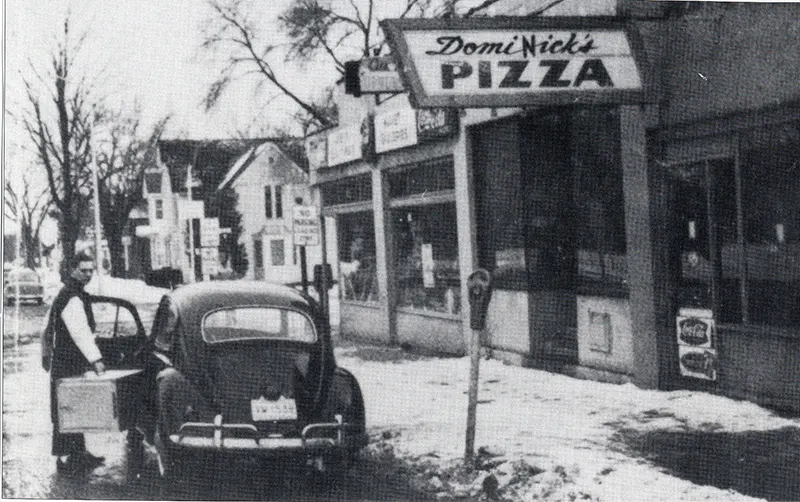
The year 1960 witnessed a significant moment in the history of fast food and pizza delivery with the entry of Domino's into the market. In Ypsilanti, Michigan, brothers Tom and James Monaghan made a decision that would not just alter their lives but also significantly impact the pizza industry. They took a leap by purchasing DomiNick's, an existing pizza store at 507 Cross Street. This modest acquisition laid the groundwork for what would rapidly evolve into one of the world's leading pizza chains.
However, the journey from a single store to a renowned brand was not straightforward. By 1965, Tom Monaghan, demonstrating ambition and business savvy, expanded operations by acquiring two more pizzerias, bringing the count to three, all operating within the same county. This expansion presented an opportunity — to unify the stores under a single brand identity for wider recognition and operational efficiency.
Yet, a challenge arose. The original owner, Dominick DeVarti, prohibited the use of the "DomiNick's" name for this burgeoning chain. The resolution to this obstacle came unexpectedly when an employee, Jim Kennedy, proposed a new name. Returning from a delivery, Kennedy suggested "Domino's," a name that struck a chord with Monaghan. It implied a sense of unity, a domino effect of rapid growth and delivery service, each store a crucial tile in a much larger chain.
#3 Arby’s, 1964
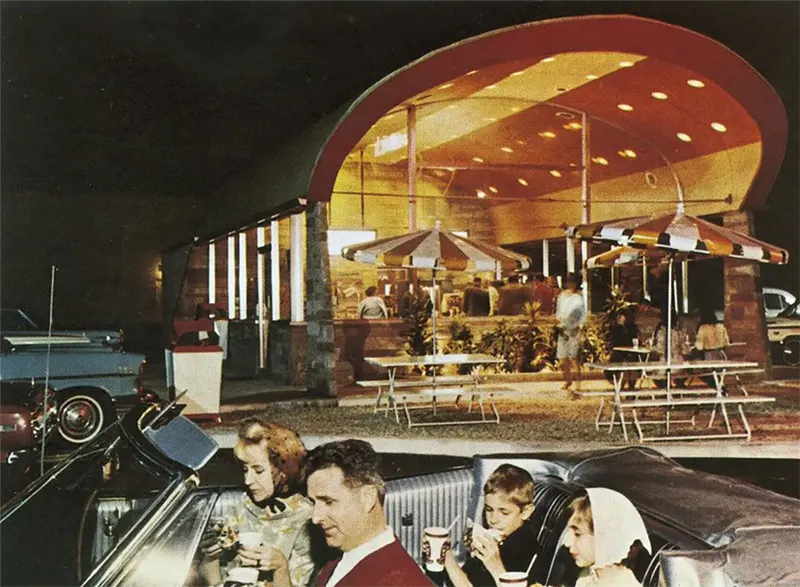
On July 23, Forrest and Leroy Raffel inaugurated their innovative venture in Boardman, Ohio, a suburb nestled near Youngstown. The brothers, leveraging their experience from their restaurant equipment business, diverged from the traditional fast-food fare, which was saturated with hamburgers. They introduced roast beef sandwiches as their specialty, a unique concept at that time.
Arby's debut was strategic, aiming to fill a gap in the market by offering an alternative to hamburger franchises. The initial menu was simplistic, focusing on quality over quantity. Customers at the first Arby’s restaurant enjoyed tender roast beef sandwiches, a stark contrast to the ubiquitous burgers, complemented by potato chips and soft drinks.
The name "Arby's" was chosen as a clever play on the co-founders' last name, representing the initials "R.B." for "Raffel Brothers." This branding sidestepped the issue of their preferred name, “Big Tex,” being unavailable due to prior registration by a business in Akron.
Moreover, the Raffel brothers were determined to differentiate not only their menu but also the dining experience they offered. The first Arby's outlet was characterized by an interior that echoed sophistication and comfort, straying from the norms of the utilitarian layouts prevalent in fast-food establishments of that era. They aspired to draw a clientele that appreciated a more refined ambiance, underscoring their roast beef offerings with a visually appealing environment that contradicted the expectations of a typical fast-food joint.
#4 Blimpie, 1964

Tony Conza, Peter DeCarlo, and Angelo Baldassare, three friends united by a vision, chose Hoboken, New Jersey, as the birthplace of their pioneering enterprise. Their innovation was not just introducing the submarine sandwich but rebranding it in a manner that distanced their product from existing perceptions.
This trio didn't just randomly choose the name "Blimpie." Conza was particularly instrumental in this aspect, finding the common term "subs" unsuitable due to its greasy, unappealing connotations. His preference leaned towards "hoagies," a term popular in Philadelphia, but this reference found little recognition in Hoboken, posing a branding challenge. Resolved to establish a unique identity, Conza undertook what can only be described as a lexical journey through the dictionary, seeking a term that captured the essence of their sandwich. The word "Blimp," resonating with the sandwich's substantial, elongated shape reminiscent of the airship, finally struck a chord.
When the first Blimpie store opened its doors, it wasn't just another eatery offering a now-familiar product. It was a statement and a testament to innovation in the fast-food industry. The emphasis wasn't solely on the 'sub' sandwich itself but significantly on the freshness of ingredients that composed it. Customers walking into the inaugural Blimpie were met with an experience that prioritized quality, freshness, and a distinctive identity, a far cry from the "greasy spoon" imagery often associated with fast casual dining. The founders' approach demonstrated meticulousness not just in culinary preparation but in conceptualizing a brand that stood apart in both name and substance.
#5 Bojangles, 1977
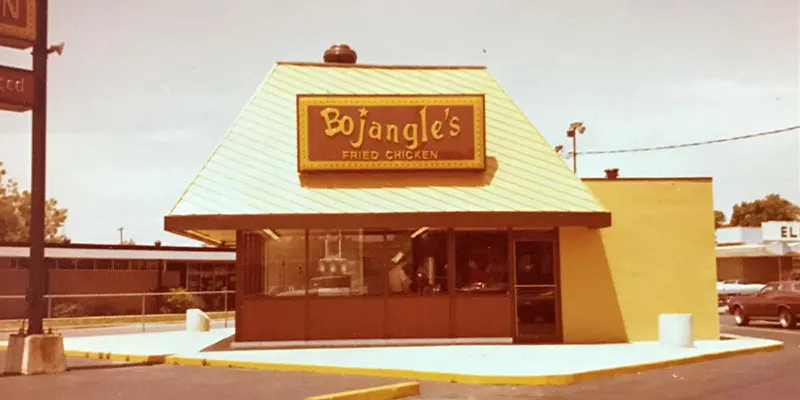
Bojangles, the brainchild of Jack Fulk and Richard Thomas, made its debut in Charlotte, North Carolina, poised to celebrate the essence of Southern cuisine in a fast-food setting. The founders, enthusiastic about creating a niche in the competitive market, named their venture "Bojangles" after a popular song from the 1920s, aiming to evoke a sense of nostalgia and happiness.
The inaugural Bojangles' opening was an event that underscored its founders' vision. It wasn't just about quick service; it was about delivering an experience steeped in Southern hospitality and tradition. Patrons were immediately greeted by the inviting aroma of buttermilk biscuits baking on-site, a sensory prelude to the delicacies that lay ahead.
From day one, Bojangles distinguished itself with a menu spotlighting the rich flavors of the South. Unlike typical fast-food restaurants, guests could indulge in crispy, succulent fried chicken, one of the eatery's specialties, alongside the now-iconic buttermilk biscuits. These freshly baked, flaky biscuits didn't just accompany meals; they were integral to the Bojangles experience, embodying the warmth and soul of the cuisine.
#6 Chick-fil-A, 1967
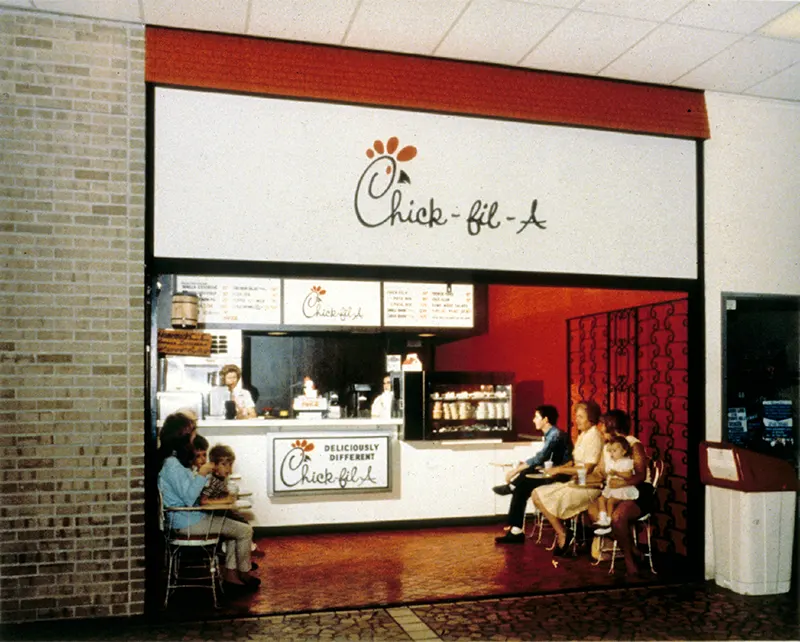
n 1967, a new chapter in the American fast-food sector began with the establishment of Chick-fil-A in the Atlanta suburb of Hapeville, Georgia. The founder, S. Truett Cathy, transitioned from running the Dwarf Grill (later known as the Dwarf House) since 1946 to creating a brand that would become synonymous with quality chicken products.
The origin of Chick-fil-A is deeply tied to Cathy's culinary experimentation and business acumen. The chain's distinct name, "Chick-fil-A," was a deliberate choice, underscoring its focus on chicken while also making a commitment to quality. "Chick" playfully highlighted the primary fare, and the unique spelling of "fil-A" was Cathy's innovative way of denoting "first in line," a reflection of his commitment to excellence.
When the first Chick-fil-A opened, customers were introduced to a new kind of dining experience. Unlike typical fast-food joints, Cathy's establishment prioritized quality ingredients, particularly in its selection of chicken. One of the standout items since the restaurant's inception has been its classic chicken sandwich, a simple yet flavorful preparation that underscores the brand's dedication to quality over complexity.
Cathy's vision extended beyond just serving delicious food; he wanted his restaurant to operate on principles of respect, hospitality, and high standards, values that are encapsulated in the "A" in Chick-fil-A. The opening of the restaurant wasn't merely about launching a new eatery; it was about setting a new standard in fast-food excellence. The commitment to top-tier service was evident from the outset, with employees trained to go above and beyond to ensure customer satisfaction, a practice that has distinguished the brand in a crowded marketplace.
#7 Chipotle, 1993
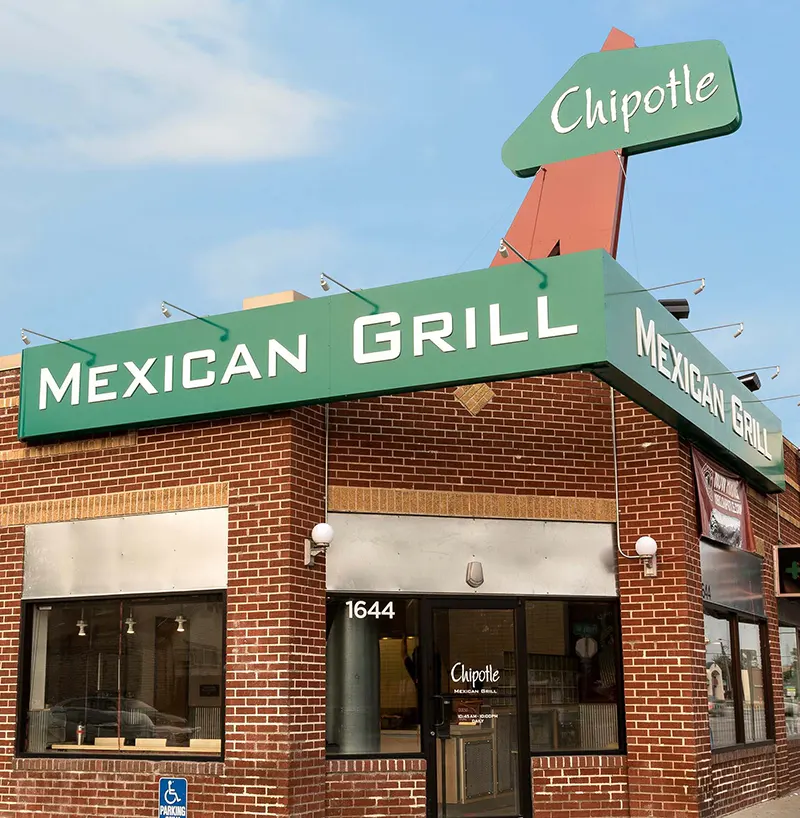
Situated in Denver, Colorado, the first Chipotle restaurant was a modest yet ambitious endeavor, challenging the status quo of Mexican cuisine offerings in the United States. The name "Chipotle," which finds its roots in the Nahuatl word for a smoked and dried jalapeño pepper, reflected the brand's essence, hinting at the spicy, smoky flavors characteristic of Mexican cooking.
Ells' vision was distinct; he didn't just aim to serve up the usual fare. Instead, from its opening, Chipotle emphasized fresh, high-quality ingredients, and a customizable menu - features that were groundbreaking at the time. The debut of Chipotle wasn't simply the launch of a new eatery; it was the introduction of a new culinary and service philosophy.
Central to this innovative approach was the assembly-line format, a departure from traditional fast-food service. Upon entering Chipotle, customers were met with a range of ingredients freshly prepared and visibly displayed. This method enabled patrons to tailor their meals according to their preferences, choosing from various options such as succulent meats, beans, vegetables, and an array of toppings. Such an approach was revolutionary at the time, offering a level of personalization that appealed to those desiring autonomy over their dining choices.
#8 Dunkin Donuts, 1948
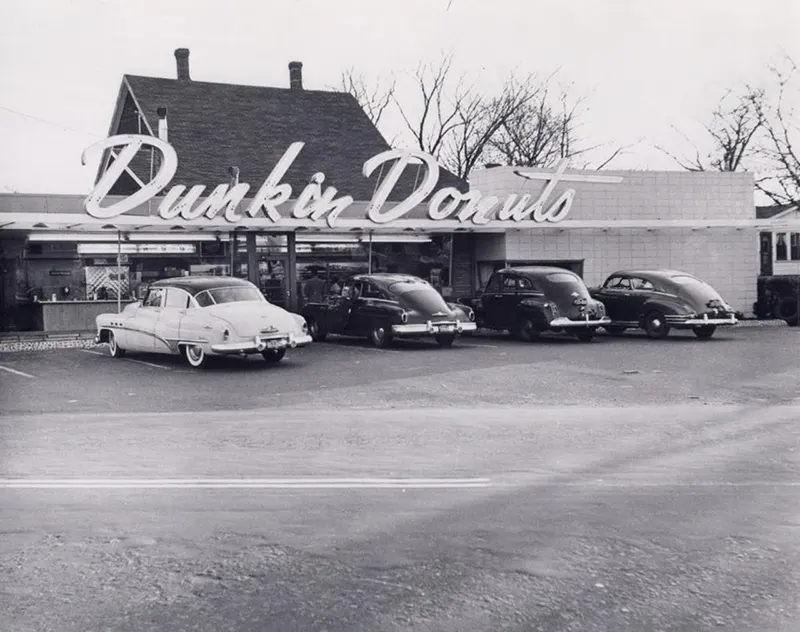
n the year 1948, the American food industry saw the inception of what would become one of its most beloved institutions, Dunkin' Donuts. Bill Rosenberg inaugurated "Open Kettle," a quaint establishment in Quincy, Massachusetts, a suburb of Boston. Here, he sold what he discerned were the two most popular items based on his experiences vending food to workers in factories and construction sites: donuts and coffee.
Rosenberg's insight was simple but profound. He recognized that the combination of fresh donuts and hot coffee was a fundamental, irresistible match for the American worker. However, it wasn't just about the food; Rosenberg understood the importance of a brand's name in its appeal and memory retention for customers. Thus, after two years of operation and deliberation with company executives, 1950 marked a rebranding phase for the establishment. "Open Kettle" transformed into "Dunkin' Donuts," a name that suggested an interactive and relatable experience — customers could literally dunk their donuts in their coffee.
The name "Dunkin' Donuts" was a branding masterstroke. It was not only easy to remember, but it also created a visual image and an action that customers could participate in. It encapsulated the essence of the quick, enjoyable snack break that Rosenberg envisioned as vital for busy American workers and the general populace. With the renaming, Rosenberg didn't just offer a product; he promoted an experience, a moment of delight in a fast-paced world.
#9 In-N-Out Burger, 1948
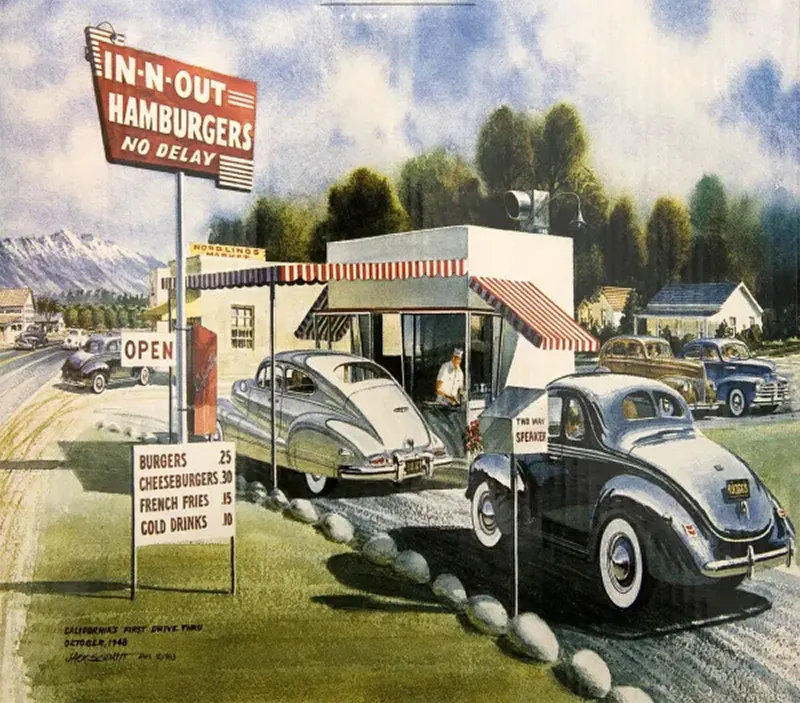
In 1948, a revolutionary concept emerged in Baldwin Park, California, reshaping the fast-food industry's landscape. Harry and Esther Snyder, founders of In-N-Out Burger, inaugurated their first restaurant in this Los Angeles suburb, strategically situated at what is today the junction of Interstate 10 and Francisquito Avenue. What set this establishment apart was not just its appetizing menu of fresh, never-frozen offerings. It was their pioneering introduction of California's first drive-thru hamburger stand featuring a sophisticated two-way speaker system, an innovation that marked a departure from the era's prevalent use of carhops.
This innovative ordering system catered perfectly to the burgeoning car culture of post-World War II America, particularly in California. Drivers appreciated the convenience and speed with which they could now order their meals without leaving the comfort of their vehicles — a welcome change from the carhop service where one would have to wait for an attendant. Moreover, In-N-Out Burger wasn't just about fast service; the Snyders were equally dedicated to the quality of their food, a commitment manifesting in their use of fresh ingredients, from their beef, which was never frozen, to hand-cut French fries and milkshakes churned from real ice cream.
#10 KFC, 1930
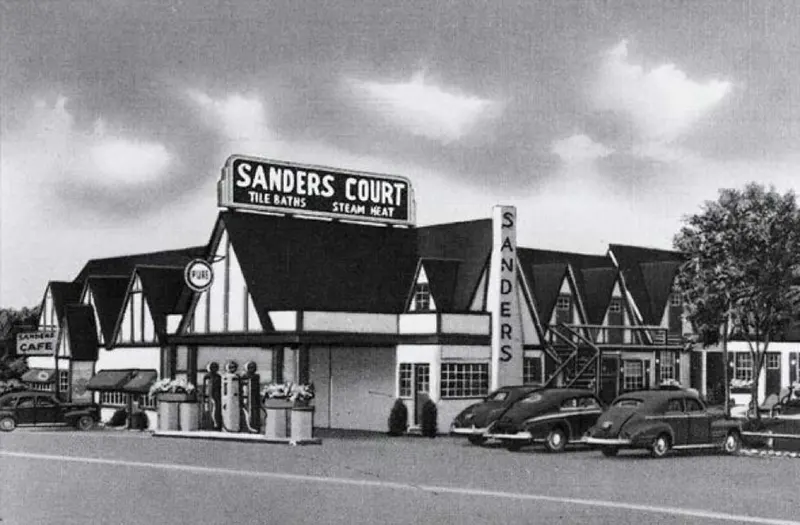
In the early 1930s, amidst the rustic roads of Kentucky, travelers would stumble upon a culinary delight, quite extraordinary for a gas station stop. Harland Sanders, who was a retired chef and an entrepreneur with a passion for cooking, initiated the transformation of a regular gas station in Corbin, Kentucky, into a rendezvous for food lovers, particularly those with a penchant for fried chicken. What was unique was not just the setting, but also Sanders's approach to cooking what he would brand as “Kentucky Fried Chicken” — a tribute to the state that shaped his gastronomic expertise.
Sanders’s kitchen was a realm where he exercised his culinary prowess, and after years of perfecting, he introduced the world to a secret recipe that featured a blend of 11 herbs and spices. However, it was not just the ingredients that made Colonel Sanders's fried chicken special. He adopted a cooking technique that was uncommon in preparing chicken at the time: utilizing a pressure cooker. This method wasn't just for speed; it created a unique texture, where the crust was crispy and golden, encapsulating tender, juicy meat within.
As word of mouth expanded the customer base, the gas station's fame overshadowed its original purpose, becoming a de facto eatery. By 1952, Harland Sanders seized the opportunity to turn his small, renowned kitchen into something monumental. He established the first Kentucky Fried Chicken franchise in Utah, a significant step that transitioned his humble establishment to a cornerstone of the global fast-food industry.
#11 McDonald’s, 1948
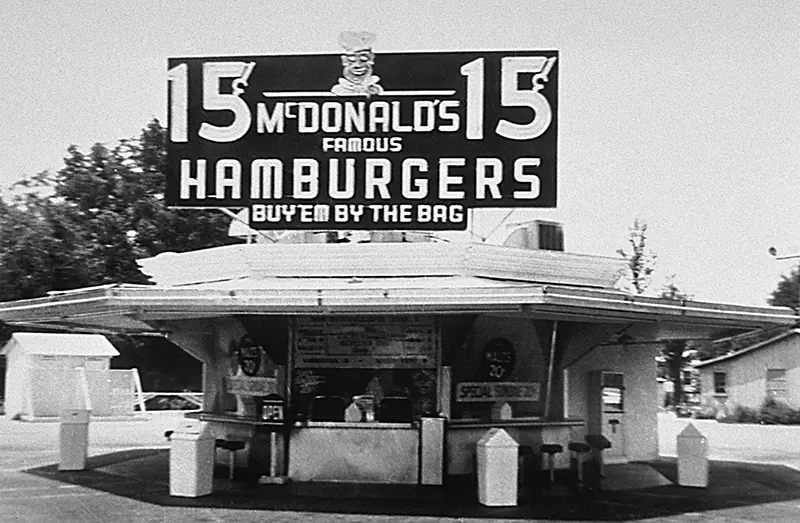
n the post-war era of 1948, amidst the American economic boom, San Bernardino, California, witnessed the birth of what would become one of the most ubiquitous global brands: McDonald's. This unassuming drive-in established by brothers Richard and Maurice McDonald debunked the prevailing norms of restaurant operation, setting a revolutionary precedent.
McDonald's, a name conceived out of simplicity and direct representation of its founders, signaled a new era in food service. What distinguished this modest establishment wasn't just its straightforward moniker; it was an innovative operational approach known as the "Speedee Service System." The system redefined efficiency: by simplifying the menu and optimizing the preparation process, the kitchen could produce large quantities of food swiftly. This methodology not only reduced costs and waiting time for customers but also ensured a uniform quality across meals, a feature that would become synonymous with the brand.
This drive-in restaurant, characterized by its speedy service and a focus on bare essentials, caught the attention of milkshake machine salesman Ray Kroc. Kroc was astounded by the efficiency and popularity of the McDonald brothers' operation, seeing far beyond the local success. His vision? To replicate this model across national borders, offering quick, reliable, and affordable meals to a broader demographic.
#12 Pizza Hut, 1958
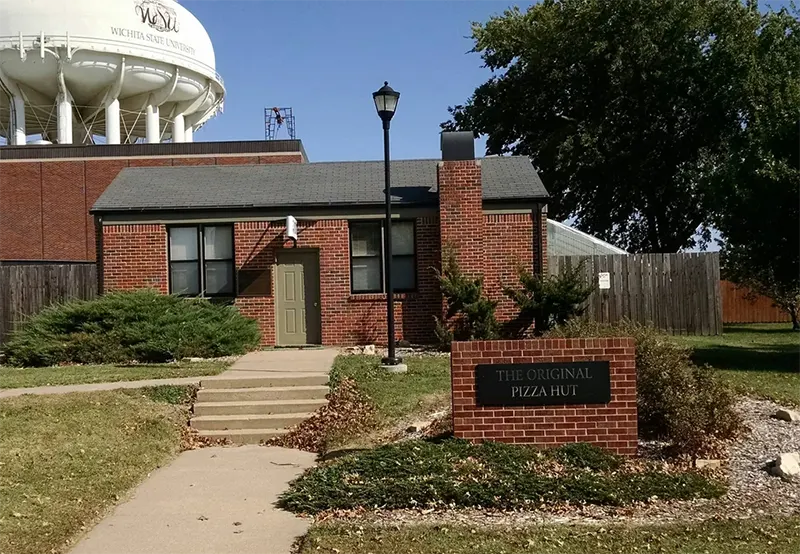
On May 31, 1958, the American culinary landscape quietly shifted with the inception of Pizza Hut in Wichita, Kansas. Two college brothers, Dan and Frank Carney, transformed their entrepreneurial vision into reality, seizing an opportunity in a market that was, at the time, scarcely acquainted with pizza. This venture was not just about introducing a new food; it was about redefining how people experienced it.
Pizza Hut's story is as much about ingenuity as it is about serendipity. Faced with a signage space allowing for just nine characters, the Carney brothers knew 'Pizza' had to be prominently featured. The remaining space, fit for a mere three letters, prompted a creative solution. Observing that the structure of their first location bore a resemblance to a hut, a family member voiced a suggestion that clicked instantly. Thus, by happenstance and necessity, the iconic 'Pizza Hut' name was coined.
The Carneys didn't stop at a catchy name; they were pioneers, realizing that pizza should transcend the traditional Italian restaurant setting. They offered a dual experience: cozy dine-in service and convenient delivery. Customers could relish piping hot pizza in the comfort of their own homes or enjoy a quick, casual meal onsite.
#13 Popeyes, 1972
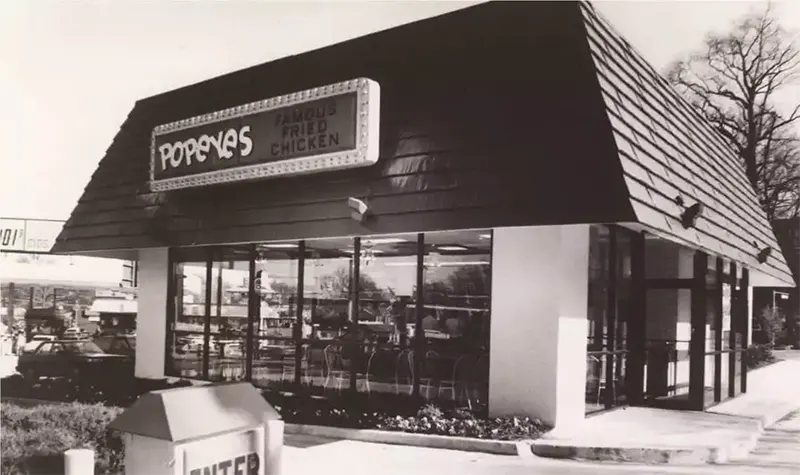
On June 12, 1972, nestled in the heart of Arabi, Louisiana, Al Copeland initiated his venture into the fast-food industry with "Chicken on the Run," a restaurant poised to rival the burgeoning Kentucky Fried Chicken. His vision was straightforward: quick-service fried chicken, aimed at the bustling lives of the locals. However, the initial concept floundered within its first months, falling short of making a significant impact in the competitive market.
Undeterred by the setback, Copeland promptly recalibrated his strategy. Merely four days after the initial closure, his eatery sprang back to life, rebranded as "Popeyes Mighty Good Chicken." This revival marked a strategic departure from merely offering speedy service. Instead, it underscored taste and quality, with a renewed focus on spicier, New Orleans-style chicken.
The establishment underwent another transformation in 1975, adopting the name "Popeyes Famous Fried Chicken." The moniker "Popeyes" doesn't originate from the well-known sailor man cartoon, as often assumed, but rather, Copeland's fiery spirit and determination mirrored the character traits of the fictional detective "Jimmy Popeye" Doyle from the movie "The French Connection." Despite the unrelated inspiration, the association with strength and resilience was apt for a brand that survived early failures and pivoted its way to success.
#14 Sonic Drive-In, 1953
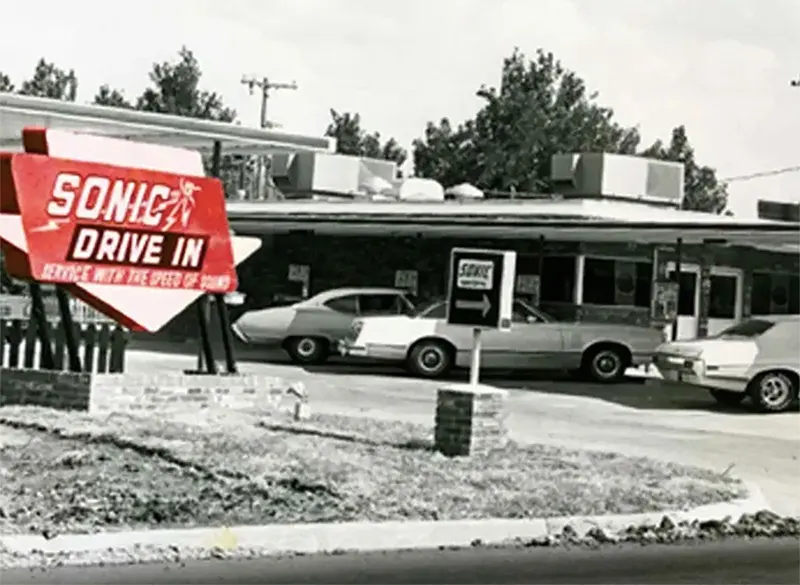
In 1953, the landscape of American fast food shifted with the introduction of Sonic Drive-In in Shawnee, Oklahoma. This innovative concept was the brainchild of Troy N. Smith, who, inspired by the post-war cultural affection for automobiles, decided to merge the nation's car-centric lifestyle with the traditional dining experience. The original establishment was called the "Top Hat Drive-In," a name that would soon give way to the more fitting "Sonic," emphasizing the lightning-fast service that became the cornerstone of the brand.
Sonic broke the conventional fast-food model from its opening day. Rather than customers walking up to a counter to place their orders, they parked their cars in individual spaces, each equipped with a unique order-taking system. This drive-in design, an homage to the '50s car culture, allowed patrons to order without leaving their vehicles, with food brought to them by servers. These servers, colloquially known as "carhops," often moved with speed and agility on roller skates, reinforcing the brand's commitment to quick service.
Moreover, Sonic set itself apart through its physical layout. The architectural design featuring prominent, brightly colored canopies became an immediate identifier for the brand. This, coupled with an extensive menu offering a variety of freshly prepared items - from classic burgers and onion rings to an array of unique beverage choices - challenged the existing fast-food norms.
#15 Subway, 1965
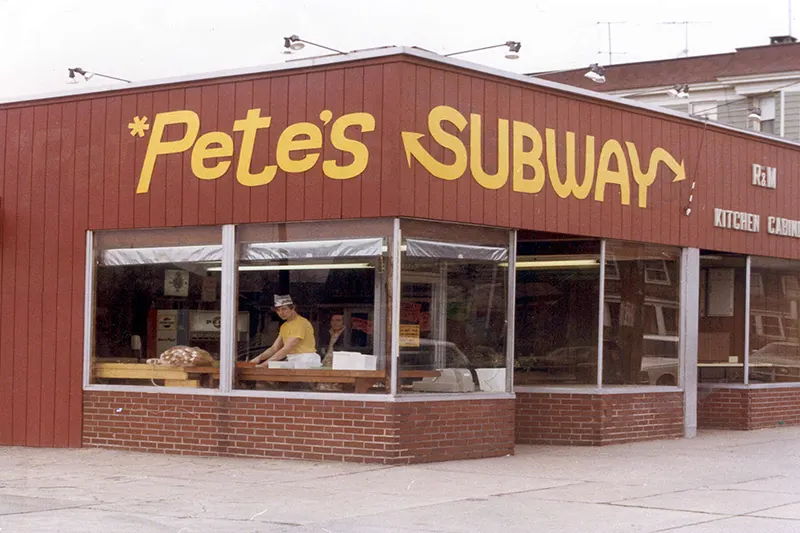
In 1965, young Fred DeLuca was searching for a way to finance his education to become a doctor. He turned to family friend Peter Buck, who lent him $1,000 to open a submarine sandwich shop, initially named "Pete's Super Submarines," in Bridgeport, Connecticut. This venture marked the birth of what would become one of the world's most ubiquitous restaurant chains.
The name of their holding company, "Doctor's Associates Inc.," reflects Fred DeLuca's aspirations to pursue a medical career and Peter Buck's doctorate in physics. Despite the medical connotation of the name, the company has no connection to any medical organization or practice; it was merely an optimistic nod to the ambitions and scholarly achievements of its co-founders.
Their business model proved successful, and the sandwich shop quickly blossomed into a thriving enterprise. Recognizing the potential for further growth through franchising, they needed a name that was easy to remember and immediately identifiable. In 1968, they decided on "Subway," a direct reference to the submarine sandwiches or "subs" that had become their signature product. The name was simple, catchy, and representative of their fast, fresh, and affordable menu offerings, encapsulating the essence of their brand in a single word.
#16 Taco Bell, 1954
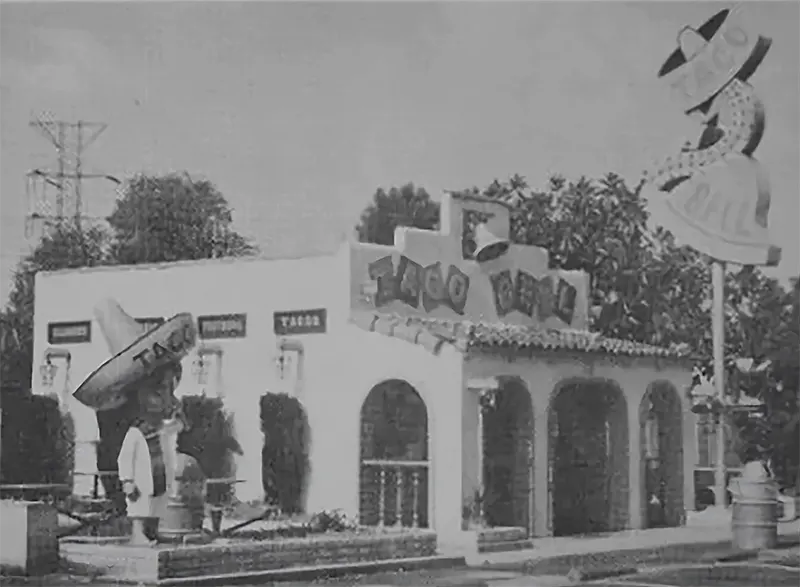
The origin story of Taco Bell underscores the spirit of innovation and persistence within the fast-food industry. Glen Bell, the founder, was not initially involved in the Mexican food business; his first venture was a hot dog stand, Bell’s Drive-In, in 1948. However, his keen entrepreneurial eye observed the popularity of a local Mexican eatery, the Mitla Cafe, which was always bustling with customers eager for its famous hard-shelled tacos.
Fascinated by the potential of Mexican cuisine and recognizing a burgeoning market, Bell embarked on a mission to decode the secret behind these sought-after tacos. After his attempts to replicate the tacos, in a testament to his determination and a cordial relationship with the owners, the Mitla Cafe owners invited him into their kitchen to learn the process.
Empowered with this knowledge, Bell transitioned from hot dogs to tacos, a move that would mark the beginning of his legacy in the food industry. In 1951, he launched a new stand that exclusively sold tacos, signaling the shift in his business strategy. The enterprise underwent several rebrands, from Taco-Tia to El Taco, as Bell continued to refine the concept and menu.
It wasn't until 1962 that "Taco Bell" was born, with the opening of the first restaurant under that name in Downey, California. The name "Taco Bell" combined the appeal of Mexican cuisine represented by "Taco" with Glen Bell's surname, thereby personalizing the brand and emphasizing the founder's confidence in his unique twist on Mexican fast food.
#17 Wendy’s, 1969
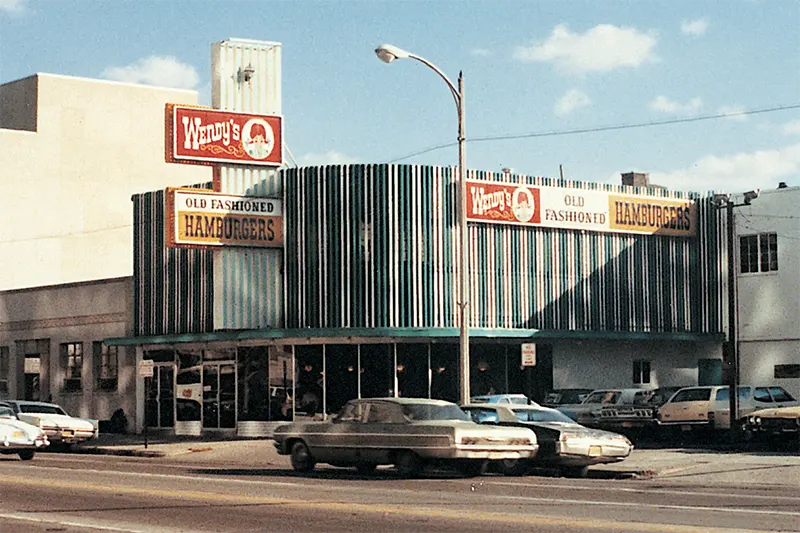
Dave Thomas's journey began with his admiration for Kewpee Hamburgers, a local eatery in his hometown of Kalamazoo, Michigan. The distinctive square burgers served at Kewpee not only differentiated the restaurant from competitors but also made a lasting impression on Thomas. This culinary quirk would later become a signature feature of Wendy’s, as the shape was perceived to suggest generosity and abundance, as the meat extended beyond the confines of the regular round bun.
In 1969, Thomas opened the first Wendy's restaurant in Columbus, Ohio. He brought with him the lessons he had learned from his experiences and observations within the food industry, including his time at Kewpee. However, it wasn't just business acumen that defined Wendy's beginnings; there was a heartfelt personal element as well. Thomas decided to name his new restaurant "Wendy's" after his fourth child, Melinda Lou, whose nickname was "Wendy." It's reported that the young Wendy, with her red hair and freckles, also inspired the logo's girl with pigtails. The decision to name a growing empire after his daughter was a profound one, as it forever intertwined the brand with his family life.
Original Wendy's restaurants showcased photographs of "Wendy" Thomas, further emphasizing the family-oriented nature of the brand. However, this public exposure came with drawbacks. In his autobiography, Dave Thomas expressed regret over the decision to use his daughter's nickname, reflecting on the challenges and loss of privacy Melinda Lou faced as the brand grew into a global chain. Many people naturally assumed she was deeply involved in the company's operations or that she was a spokesperson, a role she did occasionally embrace, participating in marketing campaigns and representing the brand at events.
#18 Whataburger, 1950
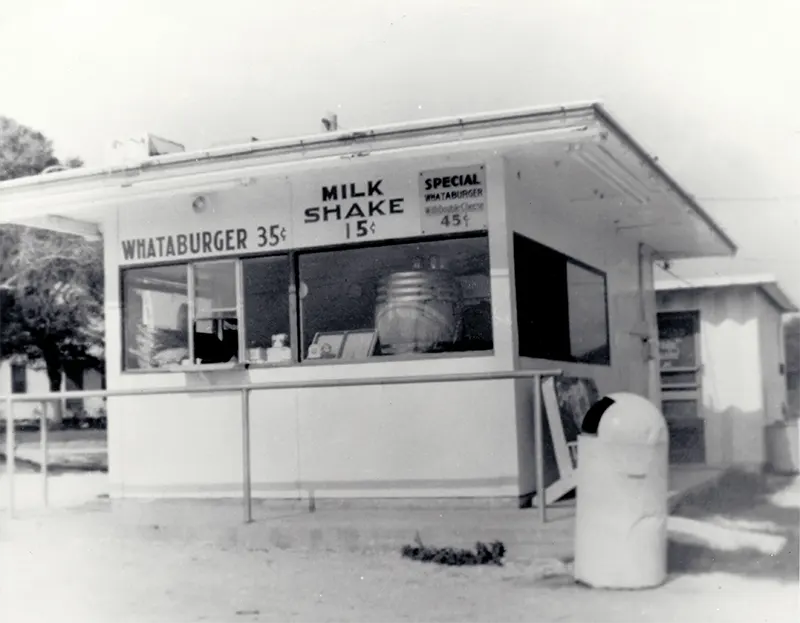
In the early days of the fast-food industry, when many chains were offering a standardized menu, Harmon Dobson and Paul Burton dreamed of something more ambitious. They weren't just looking to sell quick meals; they wanted to provide a culinary experience that would leave a lasting impression. This vision materialized in Corpus Christi, Texas, where the first Whataburger restaurant opened, promising a product so good it would prompt customers to exclaim, "What a burger!"
This wasn't an empty promise. Unlike the typical fast-food fare, Whataburger's initial offerings were notably larger, with Dobson pioneering a five-inch burger—a substantial increase over the usual four-inch versions found elsewhere. This sizable difference wasn't just a matter of quantity; it was a bold statement about quality and satisfaction. Customers took notice, and the restaurant's sales reflected its instant popularity.
However, Whataburger's distinction didn't end with its menu. The company became recognizable for its unique architecture, specifically its A-frame buildings with striking orange-and-white striped roofs. This design, introduced with the 24th Whataburger location in Odessa, Texas, in 1961, became synonymous with the brand. The choice wasn't purely aesthetic; these buildings stood out visually, providing easy recognition for customers, essentially serving as a large advertisement you could see from a distance.
#19 White Castle, 1921
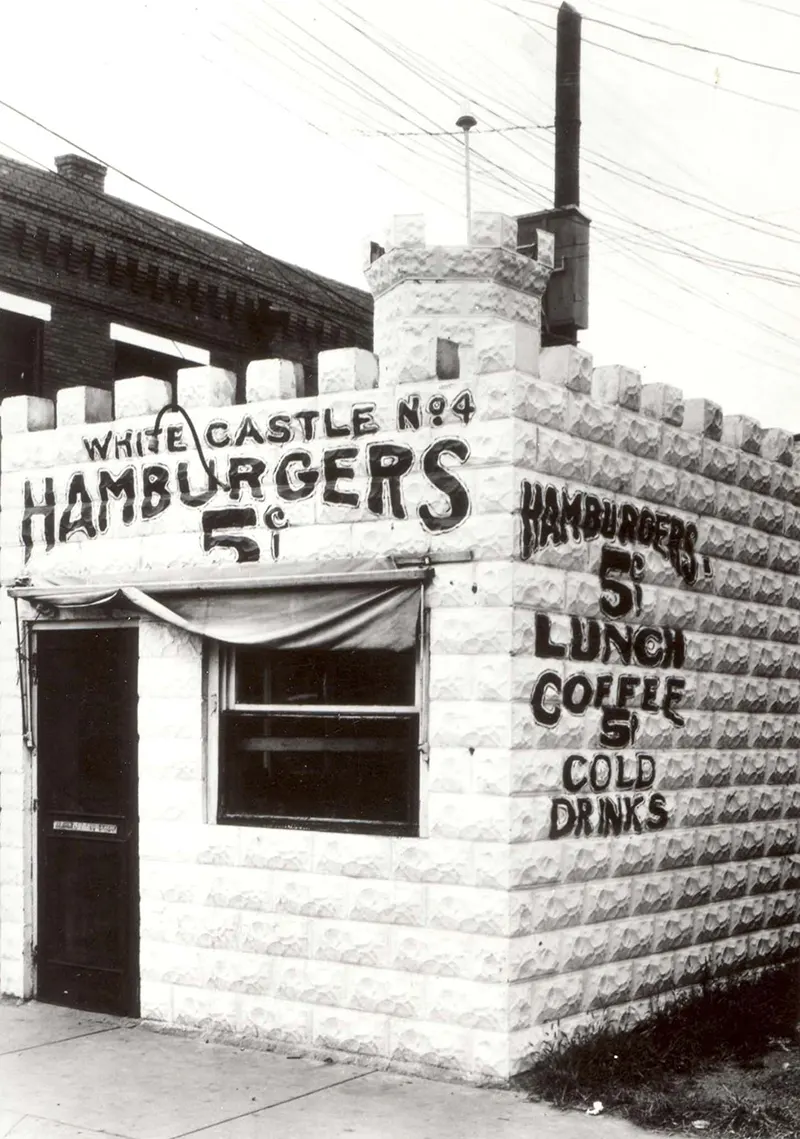
White Castle, a pioneering figure in the American fast-food industry, established a model that would be followed by countless others in the years to come. Founded by Walter A. Anderson and Billy Ingram, the first White Castle location was more than a restaurant; it was a symbol of change for how Americans consumed food.
The name "White Castle" was a strategic marketing decision, with "White" signifying purity and cleanliness, and "Castle" representing strength and stability. The concept was to offer an antithesis to the public's perception at the time of the unsanitary conditions of the food industry, especially concerning ground beef after Upton Sinclair's 1906 novel "The Jungle" had tarnished the meatpacking industry's reputation.
Anderson and Ingram were determined to revolutionize the fast-food industry, and part of that was constructing an image that customers would associate with hygiene and reliability. They built their restaurants with a visually striking design, resembling tiny castles, adorned with battlements and embellished with porcelain for a gleaming white finish. This was no coincidence but a deliberate move to cement public confidence in the cleanliness of their operation.
But the innovation didn't stop at the architecture. White Castle introduced the "slider" – a small, square-shaped burger that made eating on the go both convenient and affordable. These sliders, renowned for their size and price, became a staple of the White Castle brand. The five-cent price was a part of their appeal, making them accessible to everyday Americans during a period of economic difficulty and beyond.
#20 Krispy Kreme, 1937
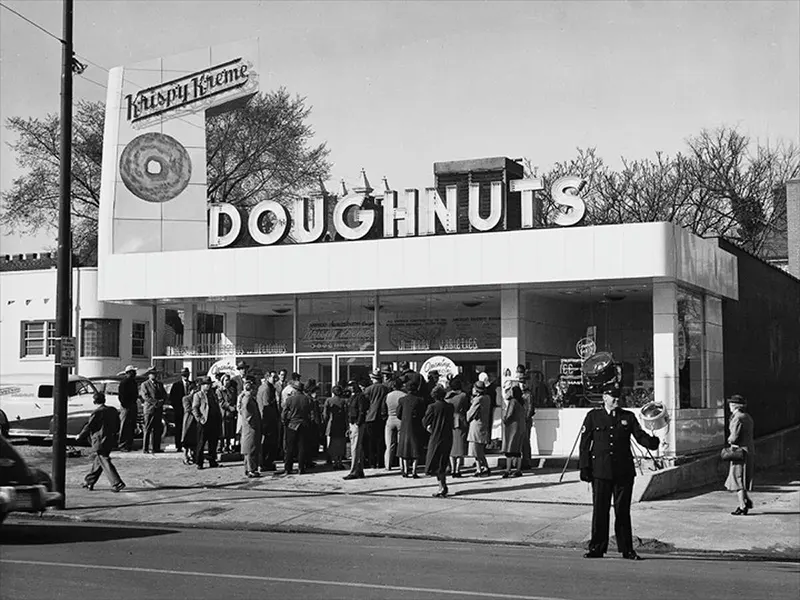
In 1937, a modest doughnut shop with an evocative name sprouted in Winston-Salem, North Carolina: Krispy Kreme. The allure of the name, combining "Krispy" and "Kreme," wasn't merely a catchy pairing but a true representation of the product—doughnuts that were delightfully crispy on the outside, with a luscious creamy texture within. Every bite promised and delivered an experience of indulgence, capturing the essence of a perfect doughnut.
The man behind this rising star in the world of sweets was Vernon Rudolph. Fueled by passion and a secret recipe he had come across, Rudolph embarked on a culinary adventure, crafting doughnuts that transcended the ordinary. These were not just any doughnuts; they were a sensation, with a taste and texture so divine that they seemed to melt upon contact with the palate.
Word spread quickly, and it wasn't long before the streets of Winston-Salem buzzed with excitement over this new treat. The small shop, which had once been a mere newcomer to the town's food scene, soon became its crown jewel. Residents and visitors alike were drawn to its inviting aroma and the promise of a melt-in-your-mouth experience.


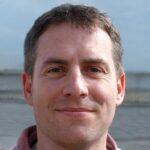
It’s funny that this “article” claims to show these chains as they appeared on the opening day of their opening location, but when they show Burger King, they tell you the Whopper didn’t come until 3 years after the first BK opened, but the picture shows a location that says “Home of the Whopper.” lol smh